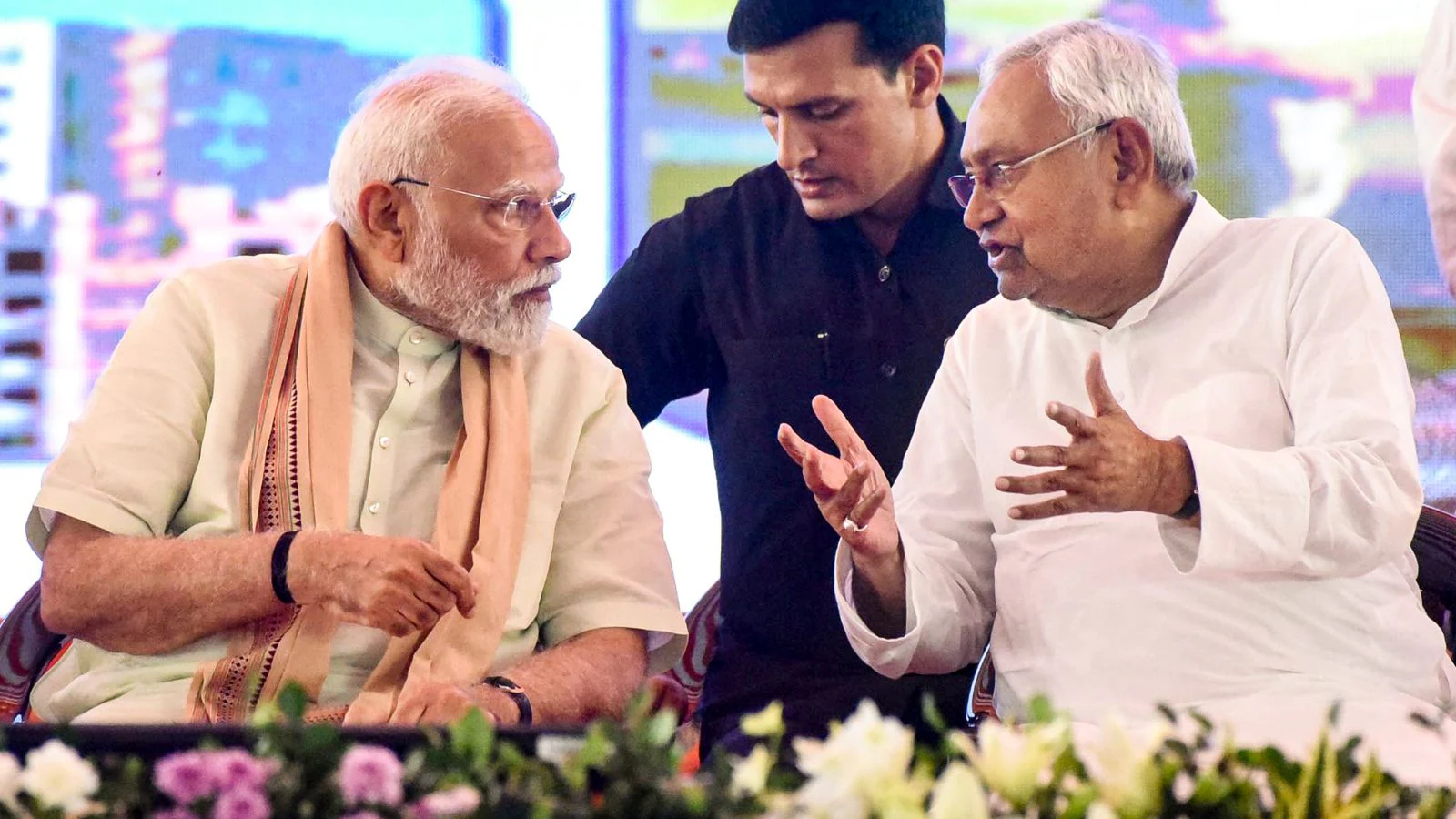Copyright news18

For the first time, the Janata Dal (United) or JD(U) of Bihar Chief Minister Nitish Kumar has agreed to contest the same number of seats with its ally Bharatiya Janata Party (BJP). Before this, the saffron party had always contested fewer seats than JD(U) whenever they fought under the National Democratic Alliance (NDA). Of the 243 seats, both parties are contesting for 101 seats each, leaving 41 to the smaller allies. Since 2000, Nitish Kumar — then with the Samata Party and the chief minister for just 7 days under the state’s first NDA government — has remained the face of the alliance. His party, JD(U), which has seen a decline in its fortunes since the 2014 Lok Sabha elections, was allotted more seats than the BJP in the last assembly elections. Though JD(U) contested 5 more seats than the saffron party, the former was able to bag 43 seats in comparison to the BJP’s 74. Despite this, Nitish Kumar, coming from the backward Kurmi caste, took the oath as the NDA’s chief minister once again, highlighting his appeal in the state, particularly among the backward castes, who form a large chunk of the state’s population. He has carefully cultivated his image as a leader of the marginal communities during his long rule. The BJP too reluctantly agreed to offer the chief minister’s post to Nitish Kumar, as the saffron party also lacks a popular leader within the state. The JD(U), while claiming itself ideologically as a component of the socialist Mandal movement, in reality has been surviving primarily on Nitish Kumar’s image, with the future really looking bleak. Nitish has so far refrained from announcing his successor, while his rival, once a friend, Lalu Prasad Yadav, years ago announced his younger son Tejaswi Yadav as the successor of the party. Signs of political change Since the 2005 state elections, irrespective of any alliance’s victory or any change of coalition government, Nitish Kumar — barring a brief period of 9 months — has returned as the chief minister of the state. But this time, Nitish’s political stock has fallen to a certain extent, and he is now referred to as a setting sun. While Nitish once again sits on the chief minister’s chair, it will be known after the results settle down — but one thing that is clearly evident is that the state has indicated that it is ready to enter into a new era. One of the significant aspects of the looming new era is the establishment of the BJP as one of the two main parties of the state by replacing the JD(U). The other main party is obviously the RJD, the main Opposition party in the state. The rise of the BJP in the state started with the entry of Narendra Modi into national politics. Although initially seeing a peak in the 2014 elections, where the NDA minus JD(U) won a large share of seats, the BJP stumbled in the state assembly polls of 2015 as the JD(U)-RJD combine, in partnership with Congress, won the elections, mostly with the help of the backward castes and Muslims. With the JD(U) joining the NDA later, the BJP was forced to take the backseat, becoming the junior partner of Nitish’s party in the last assembly polls. This was in sharp contrast to the 2019 Lok Sabha polls, when JD(U) agreed to contest an equal share of seats with the BJP. But now the scenario has changed. The saffron party’s current dominance is reflected in home minister Amit Shah’s statement that if the NDA wins, the chief minister will be decided after holding discussions with all partners of the alliance, while maintaining that Nitish Kumar remains the face of the alliance during the elections. This shows that the BJP is cautious about the choice of the chief minister and is keeping its options open, similar to what happened in Maharashtra, where it replaced the sitting chief minister, Shiv Sena’s Eknath Shinde, with its own popular leader, Devendra Fadnavis, after the election results. Shah’s statement also makes it clear that the BJP’s central leadership will have a key role in deciding the next chief minister if NDA wins — a departure from earlier cases where Nitish Kumar’s words were thought to be the final ones in the alliance. Signs of an ideological change This political change also has ideological dimensions. The rise of the BJP is based on its Hindutva agenda. However, it will be simplistic to see Hindutva (Kamandal) as the only factor behind the saffron party’s rise. The BJP’s rise in Bihar is also due to the welfare schemes of the Modi government. This shows how the BJP’s new orientation under the leadership of Modi to blend its Kamandal politics with that of Mandal has helped the party in expanding its base among the backward castes and Dalits. Though an ideological shift is visible in the state, currently, it is also a fact that the saffron party can’t form the government on its own, like the other Hindi-belt states, reflecting the limitations of its Hindutva politics, particularly in the state elections. A large part of the state is populated by the backward castes and Dalits, and the perception that the state leadership is being dominated by upper castes has also played a negative role for the saffron party. Though lately, the saffron party has started giving prominence to leaders belonging to the backward castes like Samrat Choudhury, who earlier was the state party president and now the deputy chief minister in Nitish-led NDA cabinet. Earlier JD(U) and RJD — both socialist parties representing Mandal politics — dominated the state. So, there wasn’t much ideological shift noticed in the state with the change of political power. However, with the BJP’s emergence as the dominant party and JD(U) slowly and gradually on the way to take the backseat, the state politics is gradually becoming ready to witness an ideological shift with the BJP’s own version of Mandal mixed with Kamandal on one side and RJD’s own version of Mandal mixed with Muslim appeasement on the other side. This shift can be clearly witnessed in this election season. The results of this season will offer insights into the shaping of this ideological bi-polarisation in the state with one pole led by the BJP and the other led by the RJD. The author is a political commentator. His X ID is @SagarneelSinha. Views expressed in the above piece are personal and solely that of the author. They do not necessarily reflect News18’s views.



